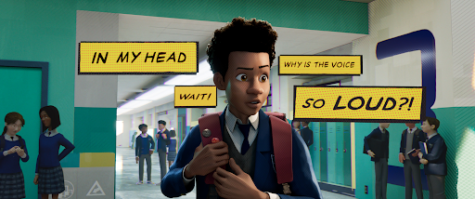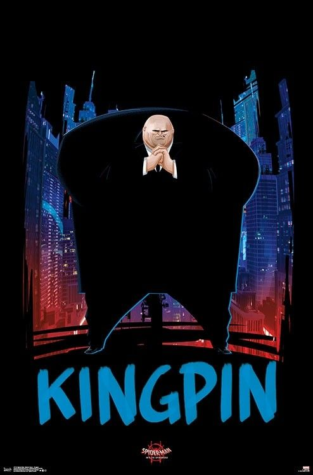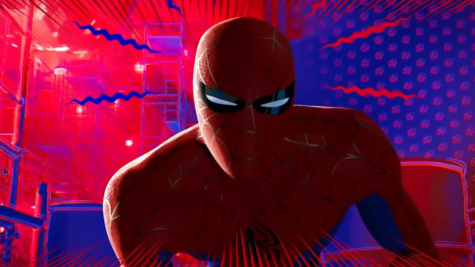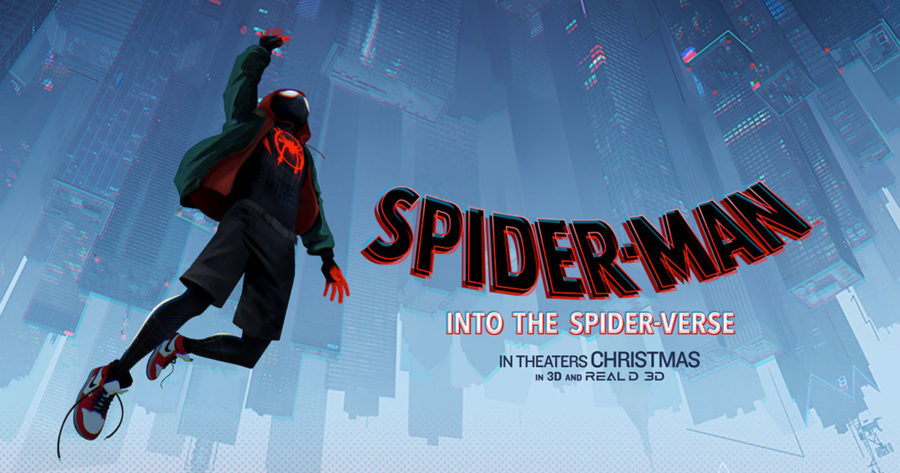“Spider-Man: Into the Spider-Verse” is the best Spider-Man yet
“Spider-Man: Into the Spider-Verse” movie poster. Photo credit: http://www.intothespiderverse.movie/
December 21, 2018
Going into theaters, I was excited to see the latest Spider-Man movie, especially considering its Rotten Tomato score of 97 percent. At the same time, I knew it was animated, and animated movies usually fair better with critics. After leaving theaters, I knew it wasn’t the fact that it was animated which helped “Spider-Man: Into the Spider-Verse” get such high praise. It’s one of the best movies to come out of 2018 by far, and my new favorite Spider-Man movie.
The movie centers on Miles Morales (Shameik Moore), a black, Puerto Rican graffiti artist teen from Brooklyn who’s bitten by the same spider as, and from the same realm as, the Peter Parker (Chris Pine) we’ve all come to know as Spider-Man. Pretty quickly, Parker is killed by Kingpin (Liev Schreiber), a man trying to use a machine that breaches the multiverse in order to get his wife and son back. In order for Morales to defeat Kingpin, he’s gonna need the help of all of the other Spider-People who’ve landed in his realm: Peter B. Parker (Jake Johnson), an older version of the original Peter Parker from a parallel universe, Gwen (Hailee Steinfeld), a teenage girl, Noir Spider-Man (Nicholas Cage), a private eye, Peni Parker (Kimiko Glenn), a young girl who uses her robot spider to fight crime and Peter Porker (John Mulaney), a Spider-Pig called Spider-Ham. Of course, there’s a catch, Morales happens to be the only Spider-Person who’s new to his powers, and if the Spider-People don’t get back home, they’ll die. What happens next? Danger, adventure and a dash of heroism culminate into an epic movie.

There are so many components that make this movie great: the characters, the music, the script, but the absolute best part about it was the animation. Because it wasn’t live action, this movie was able to rely heavily on the comics. Not only did the characters themselves resemble their comic book origins, but the creators used speech bubbles, narration, picture boxes, booms and pows and everything in between. I’ll admit, the

detail put into the characters themselves sometimes looked awkward when juxtaposed with the background which took on a Roy-Lichtenstein look, but you get used to it after a while, and once you realize its purpose–to emulate the comics– appreciate it. Also, some of the characters movements seemed jerky, and there were times when the mouths didn’t seem to reflect the words being said, but this can be said about almost any animation. Besides, the vibrant colors and overall comic book visuals were spectacular and unique.
The characters themselves were also charming. Morales is by far the most diverse superhero out there, and possibly the most powerful Spider-Man with his powers of invisibility and electricity manipulation.

Peter B. Parker was great. He was a mix between–a kid appropriate–Deadpool, the cocky Iron Man and the nerdy Peter Parker we’ve become accustomed to. Gwen was fantastic. Being a female hero is already a plus, but her control over her power at such a young age is impressive, and she’s fierce. The other three Spider-People didn’t have significant roles, but Noir Spider-Man and Spider-Ham basically served as comedic relief, and the entire idea of Peni was cool–if you’re a Mortal Kombat fan, think Ferra and Torr except less evil. Morales’ dad (Brian Tyree Henry), also plays a significant role. He’s a cop who happens to be opposed to vigilante heroes, which doesn’t bode well for Miles, but Papa Morales is humorous and touching when it comes to being a father. The final character I’ll discuss is Kingpin. I have to say, as far as villains go, Kingpin was lacking. It was odd that he was so large when all the other characters were realistic, and his character development was basically non existent. Still, the movies focus was more about the Spider-People working together, so I was willing to let these flaws slide.
The music was well suited for the movie. It was majorly hip hop and rap music, which fit with Morales’ personality and the tone of the movie. It gave the entire film a modern, next generation feel, which is fitting since it’s basically about the next generation of Spider-People–just an FYI, the music good on its own, so I recommend the soundtrack as much as the movie itself.
Ultimately, I think one of the best parts of the film was its unparalleled diversity in its hero, Morales. It’s not every day we see black heroes, or Latino ones, and Morales was both, all wrapped up in an American bow. Unlike “Black Panther” which was set in a futuristic African village. The idea for Wakanda was spectacular, but I also feel that Morales is a more relatable character than T’challa, or any of the characters from Wakanda for that matter, because Morales is a New Yorker.

This movie truly had it all–even a Stan Lee appearance. A loveable, diverse cast, a killer soundtrack, all the feels–I was happy, sad and any other emotions you can think of–and impressive animations that rivals the groundbreaking work of movies such as “Mary Poppins” and “Moana–”think “Doctor Strange’s” visuals, yet animated. I cannot express how beautiful and breathtaking “Spider-Man: Into the Spider-verse” was. It’s an ageless film–as in for all ages– and captivated me from start to finish. With a 1 hour and 56 minute run time, that’s no small feat. If you’re planning on seeing it, do it now. If you’re not, start planning and if you’re like me and you’ve already seen it, suffer with me until it’s available for purchase.

